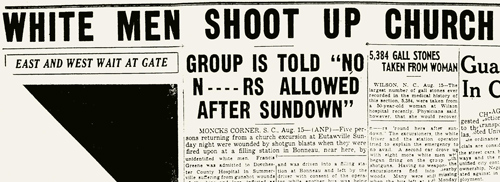Brief History of Sundown Towns
Sundown towns, sometimes known as sunset towns, are all-white municipalities or neighborhoods in the United States that practice racism in a form of segregation by enforcing restrictions excluding people of other races via some combination of racial, discriminatory local laws, intimidation, and violence.
Between 1890 and 1968, thousands of towns across the United States drove out their black populations or took steps to forbid African Americans from living in them. Thus were created “sundown towns,” so named because many marked their city limits with signs typically reading, “Nigger, Don’t Let The Sun Go Down On You In Alix”—an Arkansas town in Franklin County that had such a sign around 1970.
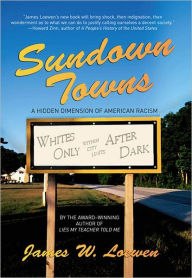
Some towns are still all white on purpose. Their chilling stories have been joined more recently by the many elite (and some not so elite) suburbs like Grosse Pointe, MI, or Edina, MN, that have excluded nonwhites by “kinder gentler means.” When I began this research, I expected to find about 10 sundown towns in Illinois (my home state) and perhaps 50 across the country. Instead, James Loewen has found about 507 in Illinois alone and thousands across the United States. There is a book called Sundown Towns: A Hidden Dimension of Segregation in America by James W. Loewen that details in a sweeping analysis of American suburban residential patterns of strict racial exclusion which was the norm in American towns and villages from sea to shining sea for much of the twentieth century.
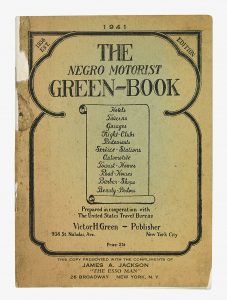
The violence was so brutally disturbing that a book called The Green Book was written to alert Black travelers where they could and could not stop safely without getting lynched. Can you imagine that? Just fifty years ago, which is a blink of an eye in the history of man. This is recent history not something that took place one thousand years ago although this racist American Institution of post slavery, Jim Crow and peonage was created by the founding fathers of America. The America that exists today in 2016 was built on African, Ethnic and Indigenous chattel slavery, racism, murder, rape, genocide, thievery, experimentation on people of color, fear and hate. There’s no way around this fact and many White people in America hate to bring up this horrific truth.
The middle of the 20th Century was a golden age for road travel in the United States. Cars had become cheap and spacious enough to carry families comfortably for hundreds of miles. The Interstate Highway System had started to connect the country’s smaller roads in a vast nationwide network. Finally, tourists could make their way from New York to California, seeing the grandeur of America along the way. That freedom and mobility, however, was not equally available to everyone.
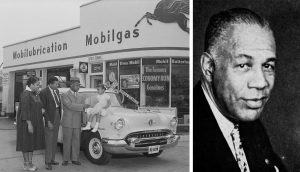
The Green Book would come to feature listings across all 50 states as well as locations in Canada, Mexico, and the Caribbean. About 15,000 copies were printed each year.
As the NAACP pushed for the 1964 Civil Rights Act, which outlawed racial discrimination, the black traveler became a key example in their argument to Congress. They appealed to that vision of the iconic family road trip, and the freedom to explore America by car. In his testimony before Senate in 1963, the NAACP’s Executive Secretary Roy Wilkins asked senators to imagine themselves as black travelers:
How far do you drive each day? Where and under what conditions can you and your family eat? Where can they use a restroom? Can you stop driving after a reasonable day behind the wheel, or must you drive until you reach a city where relatives or friends will accommodate you and yours for the night? Will your children be denied a soft drink or an ice cream cone because they are not white?
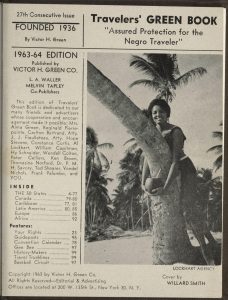
Framing the narrative of civil rights as a family travel narrative helped convince senators to vote for the bill. The last edition of the book was published in 1966.
“Don’t let the sun go down on you in this town.” African Americans equate these words with the Jim Crow South.
Present Day
Brutal and strict racial exclusion was the norm in American towns and villages from sea to shining sea in the nineteenth century and for much of the twentieth century. Today in 2016 these hate-filled racist tactics are still used today.
This country of America will NEVER be great until all the hate, racism and fear are brought out in the open for a national discussion to see how the situation can be worked out. If a African American was traveling and happen to stumble upon a sundown town they had to make a life or death decision especially after the sun had set. Black people had to find safe harbors and steer clear of white violence. The problem of restricting travel only to African Americans means living in a police state in which everyday civilians can brutally torture, violate and murder a certain group of people simply because of their skin color and hair texture. The police didn’t have to be around because after the sun went down the white citizens practiced Martial law .
Martial Law
Martial law has also been imposed during conflicts, and in cases of occupations, where the absence of any other civil government provides for an unstable population. Examples of this form of military rule include post World War II reconstruction in Germany and Japan as well as the Southern Reconstruction following the U.S. Civil War.
Typically, the imposition of martial law accompanies curfews; the suspension of civil law, civil rights, and habeas corpus; and the application or extension of military law or military justice to civilians which is clearly apparent during the Ferguson Uprising, the civil rights movement of the 1960’s and the Reconstruction Era after the so-called “Civil-War”. The word civil war is an oxymoron because there is NOTHING “CIVIL” about ANY war. The people who are being invaded and killed have a right to protect themselves and their families.
Sources: Encyclopedia of Arkansas, TheGrio.com, Sundown.tougaloo.edu
For additional information and research:
Pickens, William. “Arkansas—A Study in Suppression.” In These “Colored” United States: African American Essays from the 1920s, edited by Tom Lutz and Susanna Ashton. New Brunswick, CT: Rutgers University Press, 1996.
Crabtree, Smokey. Too Close to the Mirror. Fouke, AR: Days Creek Production, 2001.
Dougan, Michael. Arkansas Odyssey: The Saga of Arkansas from Prehistoric Times to Present. Little Rock: Rose Publishing Company, 1994.
Froelich, Jacqueline. “Race, History, and Memory in Harrison, Arkansas: An Ozarks Town Reckons with Its Past.” In Race and Ethnicity in Arkansas: New Perspectives, edited by John A. Kirk. Fayetteville: University of Arkansas Press, 2014.
Froelich, Jacqueline, and David Zimmerman. “Total Eclipse: The Destruction of the African American Community of Harrison, Arkansas, in 1905 and 1909.” Arkansas Historical Quarterly 58 (Summer 1999): 131–159.
Harper, Kimberly. White Man’s Heaven: The Lynching and Expulsion of Blacks in the Southern Ozarks, 1894–1909. Fayetteville: University of Arkansas Press, 2010.
Jaspin, Elliot. Buried in the Bitter Waters: The Hidden History of Racial Cleansing in America. New York: Basic Books, 2007.
Lancaster, Guy. “The Cotter Expulsion of 1906 and Limitations on Historical Inquiry.” Baxter County History 38 (April, May, June 2012): 26–29.
———. “‘Negroes Are Leaving Paragould by Hundreds’: Racial Cleansing in a Northeast Arkansas Railroad Town.” Arkansas Review: A Journal of Delta Studies 41 (April 2010): 3–15.
———. “‘Negroes Warned to Leave Town’: The Bonanza Race War of 1904.” Journal of the Fort Smith Historical Society 34 (April 2010): 24–29.
———. “Nightriding and Racial Cleansing in the Arkansas River Valley.” Arkansas Historical Quarterly 72 (Autumn 2013): 242–264.
———. Racial Cleansing in Arkansas, 1883–1924: Politics, Land, Labor, and Criminality. Lanham, MD: Lexington Books, 2014.
———. “‘There Are Not Many Negroes Here’: African Americans in Polk County, Arkansas, 1896–1937.” Arkansas Historical Quarterly 70 (Winter 2011): 429–449.
———. “‘They Are Not Wanted’: The Extirpation of African Americans from Baxter County, Arkansas.” Arkansas Historical Quarterly 69 (Spring 2010): 28–44.
Loewen, James W. Sundown Towns: A Hidden Dimension of American Racism. New York: The New Press, 2005.
———. “Sundown Towns and Counties: Racial Exclusion in the South.” Southern Cultures 15 (Spring 2009): 22–47.
Morgan, Gordon D. Black Hillbillies of the Arkansas Ozarks. Fayetteville: University of Arkansas Department of Sociology, 1973.
Nichols, Cheryl Griffith. “Pulaski Heights: Early Suburban Development in Little Rock, Arkansas.” Arkansas Historical Quarterly 41 (Summer 1982): 129–145.
- Tornado hits O’Fallon Park in north St. Louis - July 30, 2023
- Benefits and Advantages of Having a Home-Based Business - June 15, 2020
- The Benefits of Self-publishing Your Music - January 7, 2020
